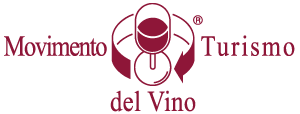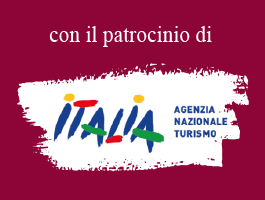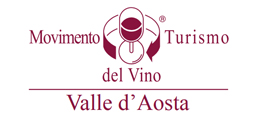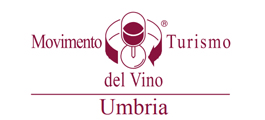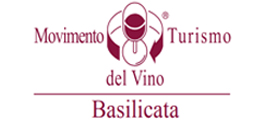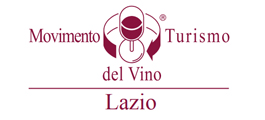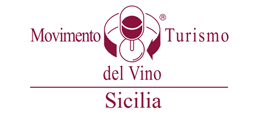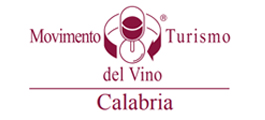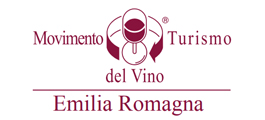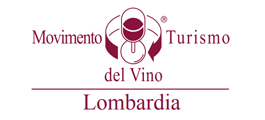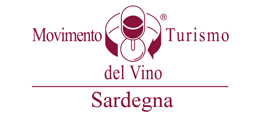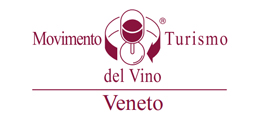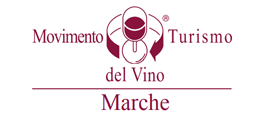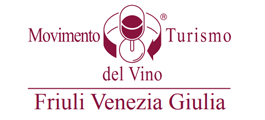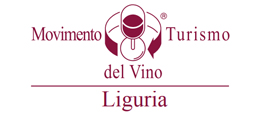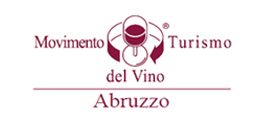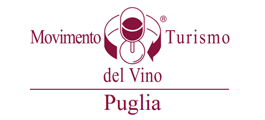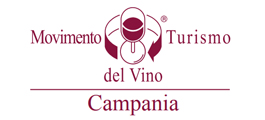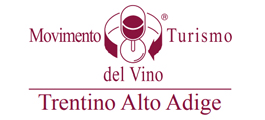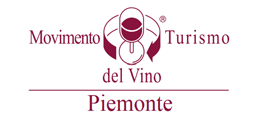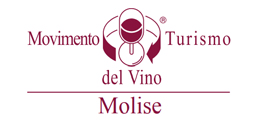The Collio
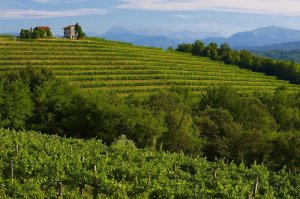
The Collio is situated at the extreme eastern edge of the region, in the province of Gorizia on the border with Slovenia. A premium-quality wine area, the Collio was one of the first in Italy to be recognised, in 1968, as a Denominazione d’Origine Controllata, or DOC zone. It runs from the hills of San Floriano and Oslavia above Gorizia to those of Ruttars, Lonzano and Vencò on the banks of the Judrio, once the border between Italia and Austria.
The Collio’s succession of rolling downs, dotted with small villages and vineyards, covers a total of 1,600 hectares. This hill country is superb terrain for relaxing country holidays, in part thanks to the excellent farm holiday facilities.
The DOC zone runs almost without a break from east to west, its gentle slopes presenting extensive south-facing areas that are ideal for premium-quality winemaking. This situation has long encouraged viticulture for grapes have been grown here since prehistoric times, A zone of great white wines, the Collio produces in great part Pinot Grigio and Bianco, Tocai Friulano, Sauvignon and the renowned Collio Bianco, the DOC’s blended wine. The leading reds are Collio Rosso, Cabernet Franc and Sauvignon, and Merlot.
Typical products
Sausages and cured meats: ham, salami, cotechino and other sausages.
Fruit: Collio cherries and plums.
Vegetables: first crop baby Gorizia salad, known as Canarino.
Cakes: Gorizia gubana and putizza. Honey, spirits.
Typical dishes
The cuisine of this area is a very unusual mix of Austrian, Friulian and Slovene traditions. Recipes handed down from one generation to the next make Gorizia’s kitchen a very special one, complemented by wines that have long been considered some of the finest in the world. One characteristic Gorizian dish is boiled ham in bread sprinkled with grated horseradish, which is often a midday meal on its own. Gorizia’s delicious soups offer uniquely interesting flavours. Noteworthy are jota, a thick soup of sauerkraut, potatoes, beans and meat or pork rind, and Friulian barley and bean soup. The local bread dumplings have clearly been imported from central Europe, but in Gorizia they are transformed by Mediterranean aromas. In spring, the local eateries offer fragrant herb omelettes, then in autumn you will find muset e brovade (cotechino sausage with grated pomace-steeped white turnips), gulasch (in endless spicy variations), kaiserfleisch (smoked pork sprinkled with fresh horseradish and served with sauerkraut or bread dumplings), game with polenta, shin of pork or baked veal. Tempting side dishes are patate in tecia (potatoes simmered slowly with lots of onion) and kipfel (small fried crescents of a mixture similar to that used for dumplings). Queen of the local cakes is gubana, the proud emblem of the Gorizian kitchen, which comprises a roll of puff pastry filled with nuts, raisins, candied citrus peel, pine nuts and walnuts. This delectable creation can be found in some pastryshops in gift packages, its lovely maroon box adorned with gilt Jugendstil arabesques. Other typical cakes are putizza, pinza, strudel (with apples, damson or cherries), krapfen doughnuts, Hungarian Dobosch cake, palacinke jam or chocolate-filled pancakes and light, raisiny kugelkupf cakes.
Cycling itineraries
Tour of the Collio - 28 km: Capriva del Friuli - Castello di Spessa - Cormòns - Brazzano - San Rocco - Monte Quarin - Subida - Russiz superiore - Capriva del Friuli.
Wine and Cherry Road - 36.4 km: Gorizia - Mossa - Capriva del Friuli - Cormòns - Giasbana - San Floriano - Oslavia - Piuma - Gorizia.
Itinerary: Gorizia - Oslavia - San Floriano del Collio - Plessiva - Ruttars - Dolegna del Collio - Brazzano - Cormòns - Capriva del Friuli - Mossa - Lucinico - Farra d'Isonzo
GORIZIA
The ideal starting point for a relaxing excursion through the gentle hills of the Collio, Gorizia has a rich heritage of history and art. The city stands on the border with Slovenia and has always been a crossroads of Europe’s main cultures: the Latin, Germanic and Slav.
The atmosphere is central European, indeed Gorizia was known as the Nice of Austria in the nineteenth century. It was a favourite haunt of the Hapsburg nobility and upper classes, who were drawn by the mild climate, green parks and brilliant social life. Gorizia’s historic centre still bears clear traces of its past. The long avenues and architecture are central European in style, above all the Jesuit church of Sant’Ignazio (1645-1767), whose onion domes dominate the main square, Piazza della Vittoria. Palazzo Attems in Piazza De Amicis is also Hapsburg in inspiration, harking back to the days of the empress Maria Therese. It was built by Gorizia-born Nicolò Pacassi, the empress’s favourite architect, who also drew up the plans for the royal palace of Schönbrunn. Like Palazzo Attems, many other public and private buildings in the city centre date from the eighteenth century, which for Gorizia was a “golden century”. Some of Gorizia’s sights are the cathedral, where there is a gravestone bearing the portrait of Leonardo, the last Count of Gorizia. Then there are the Ghetto and Synagogue, today the home of the Museo Gerusalemme sull’Isonzo. The museum is dedicated to the history of Gorizia’s Jewish community and to the graphic works of philosopher Carlo Michelstaedter, one of twentieth-century Europe’s most original thinkers. Finally, Villa Coronini deserves a visit for its garden of long-established and rare plants (visits should be booked in advance, tel. +39 0481 533485). The symbol of Gorizia, however, and the feature that proclaims the city’s mediaeval origins is the Castle. Visible from a great distance, it stands on top of the hill around which the city has grown up over the centuries. Gorizia’s Castle is one of the loveliest fortresses in Friuli-Venezia Giulia and stands in the centre of a picturesque walled settlement. Other ancient buildings cluster around it, including the fourteenth-century church of Santo Spirito, and Palazzo Donberg and Palazzo Tasso, which house the provincial collections and the Museum of the Great War. On passing through the Castle’s imposing gateway, visitors go back in time into a fascinating mediaeval world. Kitchens, prisons, the Sala del Conte reception room and the chapel all reveal how life was lived in days gone by. But the Castle has more to offer. The great crenellated granary on the top floor today houses models, maps and interactive computers that tell in spectacular detail the history of the county of Gorizia. From here, and from the castle towers, there are magnificent views over the bleak highlands of the Carso plateau, the gentle slopes of the Collio, and the river Isonzo winding across the flatlands. The castle is a popular venue for the cultural initiatives promoted by the local authority, which organises exhibitions, theatre, film festivals, concerts and much more. Gorizia’s fortress is also frequently the scene of historical re-enactments and events in costume that reach back in time, bringing to life various aspects of mediaeval life, from court rituals to sieges, markets, craft pr oduction, art and witchcraft.
Wineries
Castel San Mauro
Villa Vasi
Typical products
Prized first-cut radicchietto salad
Carso morello cherry and acacia honey
Gorizian gubana
Festivals and events
Dies Domini, Medieval Festival - April Sergio Amidei Prize - film festival in castle (late July)
World folklore festival (late August-early September)
Mittelmoda Expo and Mittelmoda Premio international fashion days and competition for young designers (September)
Fiera di Sant'Andrea fair (December)
Gusti di Frontiera, international food and wine fair - September Dicembre Goriziano and Christmas market (December)
First Sunday of month: Soffitta in Piazzutta (antiques market in Piazza Tommaseo)
Nature
Parco di Piuma e dell’Isonzo park (righthand bank of river Isonzo)
An ideal place to walk or take exercise, the park includes a Percorso Vita, or “life route”, and at Piuma, the Remuda stables (with bar-trattoria).
Information
Gorizia Infopoint
Corso Italia 9 - 34170 Gorizia
Tel: +39 0481 535764
Fax: +39 0481 539294
e-mail:info.gorizia@turismo.fvg.it
www.turismo.fvg.it
Municipality of Gorizia, Culture and Tourism Departement
Piazza del Municipio, 1
Tel. +39 0481 383202.
www.comune.gorizia.it
OSLAVIA
The road into the Collio leaves Gorizia along Viale XX Settembre and crosses the Ponte del Torrione, the bridge over the Isonzo. You then take the Strada del Vino e delle Ciliegie (Wine and Cherry Road) to Oslavia, a small town noted for its wines and the massive white bulk of the Ossario, the monument that is the last resting place of tens of thousands of soldiers. This area was one of the First World War’s most important fronts.
Wineries
Sosol
SAN FLORIANO DEL COLLIO
San Floriano rises scenically over the hill of the same name. It is a major wine producing centre and home of the ancient residence of the noble Conti Formentini family.
Wineries
Marcuzzi Viticola
Ivan Vogric
Humar Vini
Graunar
Festivals and fairs
Exhibition and tasting of typical wines and products (first week in May)
Likof, food and wine fair - May
PLESSIVA
The quiet village of Plessiva nestles in the hills on the border with Slovenia. Here, visitors will find the Bosco di Plessiva, a splendid park with clearly marked paths, leisure facilities and refreshment areas.
RUTTARS
Standing on the hill of the same name, Ruttars is noted for its wines and for its excellent trattorias. In the old part of the village is the twelfth-century Torre di Marquardo while on the slopes of the hill looms the mediaeval outline of the thirteenth-century Castello di Trussio, which today is an elegant restaurant.
Wineries
Casa delle Rose
Crastin di Collarig Sergio
Pascolo
DOLEGNA DEL COLLIO
The emblem of this pretty village, split up into various settlements, is a group of five stars, each corresponding to one of the districts, and a pen in honour of Pietro Zorutti. Still considered one of Friuli’s greatest writers, Zorutti was born here in 1792. There are a number of plain but interesting votive churches in the area, including the church of San Leonardo (fifteenth century) at Scriò, the church of Sant’Elena (sixteenth century) at Mernico and the church of San Giacomo (sixteenth century) at Lonzano. Dolegna is part of the national Città del Vino “wine town” association. Sheltering among its vineyards, it is one of the Collio’s finest locations for agriturismo, or farm holidays, and also attracts visitors with its excellent trattorias
Festivals and fairs
Sapori in cantina, food and wine tour - October
BRAZZANO
This district of Cormòns was once the border between Italy and Austria. Today, visitors can admire the parish church (1763). Other sites are the sixteenth-century church of San Giorgio, with its wooden altar, dominating the village from its scenic hilltop location, and the church of Santo Stefano (fifteenth century) in the mediaeval rural village of Giassico.
Wineries
Livio Felluga (only the winery)
Festivals and fairs
Festival of central European peoples at Giassico (August)
CORMONS
This characteristic little town at the foot of Monte Quarin is the heart of the Collio DOC zone. Its ancient origins are clear from its pre-classical name, which may derive from “Carmon”, the “village of the weasels”. Centuries ago, it was already renowned for its wines and fruit. Today, Cormòns is the ideal place to stock up on premium-quality wines. They can be purchased direct from the producers or from the Enoteca in Piazza XXIV Maggio, where it is possible to taste the very best in Collio wines. The town has a Hapsburg atmosphere and a statue of the emperor Maximilian of Austria dominates the main square. In addition to wine, Cormòns is also noted for its restaurants, which are among the best in Friuli, and for its comfortable farm holiday accommodation. The oldest erections in the town are the mediaeval walls, around which lies the historic centre with its dignified seventeenth and eighteenth-century buildings. Particularly noteworthy is the lovely façade of the eighteenth-century Palazzo del Mestre-Devetag. Other attractions are the imposing eighteenth-century cathedral of Sant’Adalberto and the neoclassical Palazzo Locatelli, now the Municipio,or town hall, and the Santuario di Rosa Mistica, while the remains of the ancient fortress surmount Monte Quarin, which overlooks the town and where there is also the seventeenth-century church of the Beata Vergine del Soccorso.
No visit to Cormòns is complete until you have called at the Cantina Produttori, around which is planted the Vigna del Mondo (Vineyard of the World), with over four hundred varieties of vine from the five continents. The fruit is harvested together to produce the Vino della Pace(Wine of Peace), which is sent every year to heads of state all over the world as an invitation to peace and brotherhood.
Wineries
Polje
Subida di Monte
Local specialties
Prosciutto crudo artisanal air-cured ham
Salami and marcundela (pork offal sausage)
Festivals and fairs
Historical pageant in honour of Maximilian of Hapsburg (first Sunday in September), Provincial grape festival (second Sunday in September)
Jazz and Wine of Peace Festival - October
Horse riding
Centro Vacanze La Subida-riding club
CAPRIVA DEL FRIULI
Surrounded by a crescent of vine-clad hills, Capriva del Friuli is noted for its lovely countryside and distinguished wineries. Worth visiting are the parish church (1882), with its sixteenth-century baptismal font, and the church of the Santissima Trinità (1524). On the hills around the town, the Castello di Spessa in eclectic style (1881), and Villa Russiz in Windsor style with the De La Tour chapel (1869), are very interesting constructions. Both are now wineries.
Wineries
Fondazione Villa Russiz
Vidussi
Festivals and fairs
Bismarcia (June)
MOSSA
Mossa is a very ancient town, the first settlement s here dating from the Neolithic period. Although small, it is split between flatlands and hill country. Places to visit include the church of Santa Maria Assunta (1599). Outside Mossa itself, the votive church of Preval, built in the eighteenth century and recently reconstructed, stands on the edge of the reed-girt, small marshy lakes after which it is named.
LUCINICO
A district of Gorizia, Lucinico is linked to its larger neighbour by the Ponte IX Agosto bridge and visited by residents of Gorizia for its fine restaurants and excellent food shops.
Festivals and fairs
Vintage festival and honey fair (15 September)
Horse-riding
Circolo Ippico alla Stesa
FARRA D'ISONZO
Wineries
Borgo Conventi
Colmello di Grotta
Tenuta Villanova
